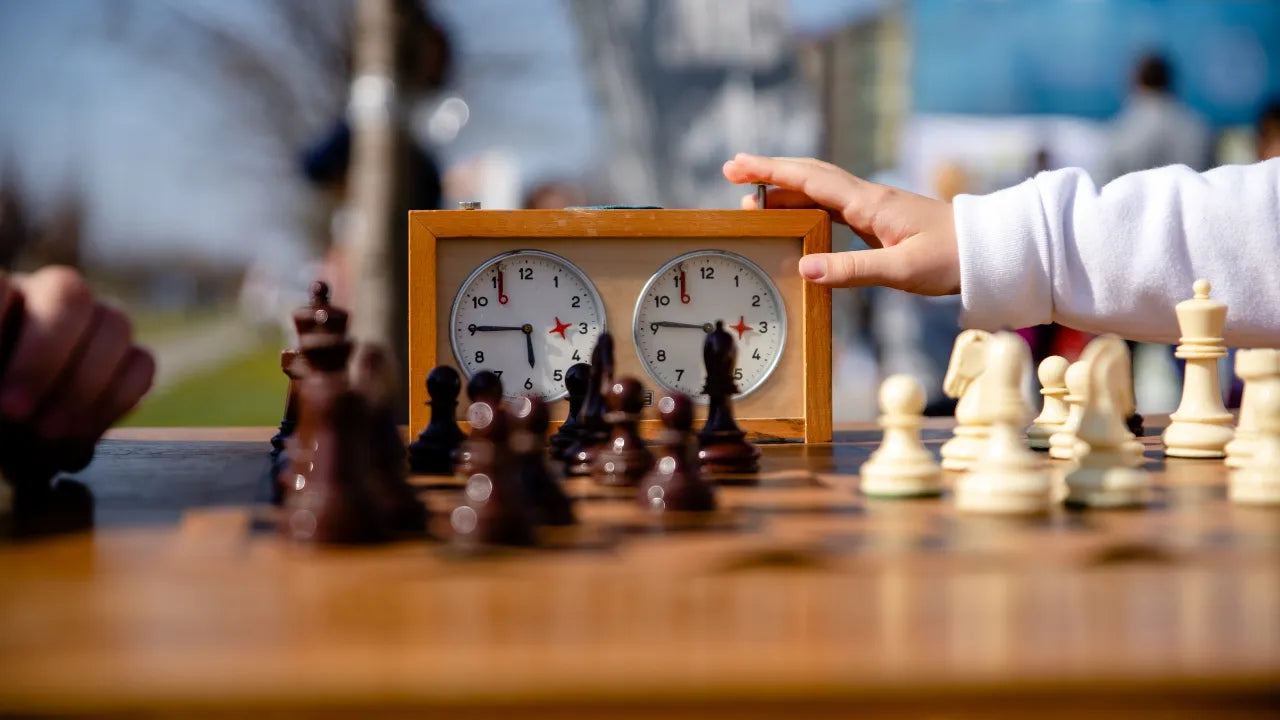How Is a Chess Game Timed: The Clockwork Behind Every Move

Imagine being in a high-stakes spy movie: your hand hovers over the chessboard, sweat beads on your forehead, the clock ticks menacingly beside you. Welcome to the world of chess timing, where every second counts and the pressure is as real as defusing a bomb in Mission: Impossible.
Whether you're playing a casual chess game with friends or watching a showdown at a major tournament like Gukesh Chess battling it out with the best, time controls are a fundamental part of modern chess. Let’s break down how a chess game is timed, why it matters, and what types of time controls exist.

Why Time Controls Exist
Without time controls, a single chess game could last days—or until both players die of boredom. Time keeps the game dynamic and fair. It ensures players make decisions promptly and adds an extra layer of strategy.
Chess education today emphasizes time management almost as much as tactics. Whether you’re on Chessdistrict, Lichess, or a live tournament stream, you’ll see how mastering the clock is a critical skill.
Types of Time Controls
1. Classical Chess Time Control
The old-school standard. Each player gets a long amount of time—often 90 minutes for the first 40 moves, followed by extra time.
Perfect for deep thinkers and grandmasters plotting six moves ahead while sipping tea.
🕰️ Example: 90 + 30 (90 minutes plus 30 seconds added after every move).
2. Rapid Chess Game Timing
Think of it as classical’s impatient cousin. Games are usually 10 to 30 minutes per player.
Fast enough to keep it exciting, but still gives room for strategy. Popular among streamers and club players.
3. Blitz Chess
Speed demons, unite! Each player has just 3 to 5 minutes total. Blink and it’s your move again.
Requires instinct, experience, and nerves of steel. Bonus: it’s great for YouTube highlight reels.
4. Bullet Chess
1 minute per player. That’s it. No time to think—just go!
Online platforms like Lichess and Chess.com thrive on this format. It’s the Formula 1 of chess.

Understanding the Chess Clock
A chess clock has two timers—one for each player. When Player A makes a move, they press a button that stops their timer and starts Player B’s. Simple in concept. Diabolical in practice.
In a physical tournament, this button-smashing becomes an art form. Online, it’s all about that lightning-fast mouse click.
Digital vs. Analog
-
Analog: Old-school clocks with hands. Looks cool, less precise.
-
Digital: Modern standard. Allows increments, delay, and displays to the second.
Time Control Extras: Increments and Delays
Increment (a.k.a. Bonus Time)
Adds a set number of seconds to your clock after each move. Helps avoid time scrambles and reduces flagging-induced heartbreak.
🧠 Common Increment: 2 to 5 seconds
Delay
The clock waits a few seconds before ticking down. Gives a tiny grace period. Think of it like a friendly countdown before the pressure starts.
Time Pressure: The Ultimate Adrenaline Rush
When you’ve got 7 seconds left and three checks to calculate, it’s not just chess anymore—it’s an action movie.
Players under time pressure often:
-
Miss obvious moves
-
Panic-blunder
-
Play “pre-moves” online (setting your move before the opponent plays)
It’s intense. It’s brutal. It’s beautiful.
Flagging: The Chess Equivalent of a KO
Running out of time is called “flagging” (from the old analog clocks with little flags that dropped when time expired).
Flagging someone—even when they have more pieces—can be as satisfying as a checkmate. It’s the Wild West out there, folks.
"You may take my queen, but you’ll never take... MY TIME!" — Braveheart (Chess Edition)
Fun Fact: The Fischer Clock
Chess legend Bobby Fischer didn’t just beat grandmasters—he beat the clock. He invented the “Fischer Clock,” which includes time increments after every move.
This helped players avoid dirty flagging tactics and made blitz games a little less chaotic.
Where to Learn More
Platforms like Chessdistrict offer excellent chess courses and lessons that cover time management. If you’re serious about playing competitively or just want to crush your friends in the next bullet match, chess education that includes clock strategies is essential.
Look for modules on time control awareness, clock tactics, and how to play under pressure. Also, check out games by rising stars like Gukesh Dommaraju , who have shown incredible poise in time trouble situations.
Conclusion: Timing Is Everything
Chess isn’t just about your next move—it’s about making that move before the clock runs out. Time adds drama, strategy, and adrenaline to every chess game. So the next time you sit down at the board, remember: even the best move in the world won’t save you if your time’s up.
Cue dramatic music. And… move!


Leave a comment